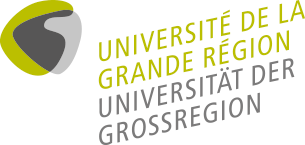UniGR-Leuchtturmbereich Materialwissenschaft und Ressourceneffizienz
- Recycling von metallhaltigen Abfallprodukten und innovative Verfahren zur Mineralienaufarbeitung
- Modellierung von Materialien mit Hilfe von Mehrebenensimulationen
- Neue Verfahren zum Betonrecycling
Diese drei Themenfelder stehen stellvertretend für eine Fülle an unterschiedlichen aktuellen Fragestellungen und Ansätzen im Bereich der Materialwissenschaft. Genau hier sieht die Universität der Großregion die Möglichkeit, die Kompetenzen und Erfahrungen aller Partneruniversitäten gewinnbringend einzusetzen und zu kombinieren.
Folgende Themenfelder wurden bereits bearbeitet beziehungsweise werden bearbeitet:
Advanced microstructure analysis
One of the key elements in materials quality control is microstructure characterization, as it relates production process settings with the final functionality of a material. Hence, precise and objective microstructure characterization provides essential information that allows tailoring functional properties of the material through adjustment of processing parameters and raw materials composition.
Furthermore, when dealing with state-of-the-art components that are made with new materials, quality control during the whole product life-cycle is getting essential in order to guarantee efficient and high quality production, proper operational stability, safety and reliability as well as optimum in-service performance of such components. Quality control using innovative methods of nondestructive testing (NDT) which are integrated in the production process with its different process steps (molding, forging, machining, assembly and joining, surface finishing) can offer excellent possibilities when high tech materials are thought to max out their mechanical, optical or chemical properties. Safe operation or advanced repair procedures for mixed-material assemblies can be inspected and even monitored with innovative NDT techniques. 3D-visualization and automated contactless inspection of complex shapes are a prerequisite for going to the limits of such modules and component parts, especially in light-weight design with ultra-highstrength steels, high performance light metals and alloys - and of course, for fibre reinforced materials (e.g. CFRP, GFRP).
Contact: Prof. Mücklich, Saarland University
Composites materials with metal/ceramic matrix
Construction materials
Baumaterialien: Rezyklierter Beton
Kann man Beton recyclen? Und wie kann er eingesetzt werden? Zu diesen Leitfragen ist in der Folge mehrerer UniGR-Workshops das grenzüberschreitende Forschungsprojekt „Nutzungspotential von Recyclingbeton“ entstanden. Die Universitäten Luxemburg (Prof. Dr.-Ing. Danièle Waldmann), Lüttich (Prof. Luc Courard), Lothringen (Prof. André Lecomte) und Kaiserslautern (Prof. Dr.-Ing. Jürgen Schnell & Prof. Dr.-Ing. Wolfgang Breit) in Zusammenarbeit mit öffentlichen und privatwirtschaftlichen Partnern haben dafür im Interreg-Programm North-West Europe ein Projekt beantragt.
Die europäische Bauwirtschaft verbraucht fast die Hälfte aller Rohstoffe und produziert gleichzeitig gewaltige Mengen an mineralischen Abfällen. EU-Ziel ist, dass 70 % des anfallenden Abfalls aus Konstruktion und Abriss bis 2020 im Sinne der Kreislaufwirtschaft wiederverwertet und rezykliert werden – bisher sind es lediglich 50 %.
Eine engere grenzüberschreitende Kooperation in der Großregion könnte in diesem Zusammenhang sehr sinnvoll sein, handelt es sich in der Bau-, Beton- und Recyclingbranche doch um Unternehmen, für welche jeder zusätzliche Kilometer Transport ein kostspieliges Unterfangen ist.
Ecomaterials for building industry: advances and future prospects in the Greater Region
Magnetic materials
An den Universitäten Lothringen, Kaiserslautern und in Saarbrücken erforschen Arbeitsgruppen magnetische Phänomene und neuartige Anwendungen auf Spitzenniveau. Diese Arbeitsgruppen haben sich 2012 zum Magnetismusnetzwerk der Großregion (Greater Region Magnetism Network, GRMN) zusammengeschlossen, um ihre Aktivitäten zu bündeln, um eine konzertierte Lehre zu entwickeln und um in beispielhafter Weise Technologietransfer zu betreiben. GRMN ist gedacht als Initiative zur Nutzung von Synergien in einem hoch innovativen wissenschaftlich-technischen Bereich, die der Großregion einen entsprechenden Standortvorteil verleihen soll.
Die Initiative versteht sich als konkrete Maßnahme unter dem Dach der Universität der Großregion (UniGR). Das Projekt wurde gefördert durch das Programm INTERREG IVA-Großregion.
Für mehr Informationen können Sie Herrn Prof. Uwe Hartmann (Universität des Saarlandes) kontaktieren.
Mineral processing and recovery of critical raw metals
Seltene Erden, Edelmetalle und andere wertvolle Metall(erz)e sind wichtige Ressourcen und für technologisch anspruchsvolle Produkte heutzutage unabdingbar.
In Europa müssen viele dieser Rohstoffe importiert werden. Um nicht auf den Import angewiesen zu sein, gewinnt das Recycling von metallhaltigen Abfallprodukten zunehmend an Bedeutung. An dieser Stelle besteht allerdings noch Forschungs- und Entwicklungsbedarf.
Kontakt:
Prof. Hans-Jörg Bart, Prof. Paul Ludwig Geiss, TU Kaiserslautern
Prof. Stoyan Gaydardzhiev, Université de Liège
Eric Meux, Université de Lorraine
Multiscale simulations
The modelling of material involves multiple scales. In computational problems mechanical properties and structural behaviour are described in a range varying from atomistic scale, nanoscale or microscale to macroscale. On the fine scales, the size and orientation of local inhomogeneities influence the mechanical behaviour while on the coarse scale or macroscale the average behaviour has to be taken into account. Usually different methods are used to model the processes on the different scales, e.g. molecular dynamics can be applied to model the atomistic scale response while the finite element method can be used to describe the behaviour on the macroscale.
If specimens become smaller or the local inhomogeneities become stronger, processes on multiple scales start to interact. Therefore, it is one of the essential questions in the modelling how to bridge the gap between fine scale quantities, like atomistic or molecular deformations or local fine structures to macroscale quantities like stress and strain. Multiscale simulations, with such features as high efficiency of continuous models and considerable accuracy of microscale models, are promising methods to resolve this problem. Different scales are connected via upscaling processes, i.e. appropriate homogenization processes that are used to compute the average properties of the macroscopic model.
The following situations may occur in multiscale modelling:
Single sided transference: Macroscopic properties of the material are computed on a small scale based on the locally inhomogeneous properties by homogenization techniques. The averaging is applied once and for all and the results are used on the macroscale
Multiple domains coupling: In a certain domain of interest a small scale model is used while in regions far away the macroscopic model is applied. The macroscopic properties should fit to the microscopic properties especially at the interface between the domains both models must fit together.
Multilevel finite element modelling (FE^2): The constitutive relation of a macroscopic model is replaced by a microscopic model and an appropriate homogenization/projection method. In this case the coupling is two-sided because the macroscopic state influences the homogenization procedure while the homogenized microscopic model determines the macroscopic material behaviour.
Seamless multiscale coupling techniques: Depending on the local properties the model can switch between a full resolution microscale model and a macroscale model. The seamless coupling is required not only on the multiple spatial scales but also on the temporal scales.
Contact:
Prof. Dr.-Ing. Stefan Diebels, Saarland University
Modern routes to solar energy conversion and storage
Tailored materials interfaces
Tailored materials interfaces are key elements in the design and function of modern materials. Prominent examples of interface-dominated materials are to be found in industrial sectors such as energy, electronics, automotive, optics and biomedicine. Scientists in the Greater Region perform valuable research activities in this promising area, but often without the coordination that could make these efforts even more efficient and visible.
Contact: Prof. Arzt, Leibniz-Institut für Neue Materialien / Saarland University



